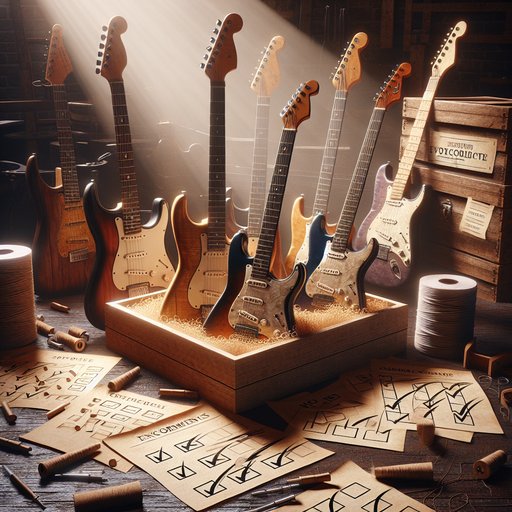
From the Telecaster’s blunt practicality to the Les Paul’s carved elegance, the history of the guitar is a civic story told in wood, wire, and votes cast with hard-earned money. Brands propose ideas, artists stump for them on stages and screens, and audiences reward or reject those platforms in a marketplace that resembles an election. Across decades, endorsements, regulations, and manufacturing choices have steered what players can buy and how music sounds. Examining this landscape reveals not only the ingenuity that built iconic instruments but also the vulnerabilities of a system where popularity, consolidation, and policy can tilt the playing field.
Guitars thrive in a consumer democracy, where the majority’s taste can become policy through sales, hype, and habit. That can encourage innovation yet also entrench sameness, as a handful of models dominate shop walls and playlists. Endorsements can magnify the effect, rallying voters around a sound or silhouette and leaving little oxygen for outliers. Regulation and corporate consolidation add their own checks and imbalances, shaping which woods, designs, and features survive the next cycle.
Early mass-market successes showed how players vote with their wallets. Leo Fender’s solid-body designs, culminating in the Stratocaster of 1954, answered working musicians’ needs for durability, serviceability, and volume. Gibson’s Les Paul, introduced in 1952, offered a contrasting platform—sustain and elegance—that built its own constituency. When Buddy Holly appeared on television in 1957 with a Stratocaster, that image reached living rooms across America, proving how a televised moment could swing public sentiment and sales.
Ownership changes later revealed a different pitfall: when decision-making drifts far from the bandstand. CBS acquired Fender in 1965 and Norlin took control of Gibson by 1969, ushering in factory-wide cost-cutting and design shifts that many players felt dulled the instruments’ edge. Voters responded by elevating pre-CBS Fenders and earlier Gibsons in the vintage market, pressuring brands to course-correct. Fender’s early-1980s retooling and the 1985 formation of FMIC, plus Gibson’s post-1986 restructuring under new ownership and its later 2018 reorganization, showed that reputations can be rebuilt—but only when companies re-earn trust.
Artist endorsements acted like campaign posters that never came down. Les Paul’s collaboration with Gibson attached a virtuoso’s credibility to a new electric template, while B.B. King’s Lucille model kept the semi-hollow voice on radio and festival stages. Steve Vai’s long-running partnership with Ibanez on the JEM helped normalize high-performance features like locking tremolos and deep cutaways, and Carlos Santana’s work with PRS carried that brand from boutique upstart to stadium mainstay.
Eddie Van Halen’s trajectory—from Kramer to Ernie Ball Music Man, Peavey, and ultimately his EVH line—showed how a charismatic platform can move entire product categories, for better or worse concentrating attention on one sonic ideal. Material and design experiments highlighted democracy’s conservatism: majorities often prefer familiar planks. Ned Steinberger’s headless graphite instruments in the early 1980s offered superb stability and portability, yet many players clung to headstocks and traditional woods. Ken Parker’s Fly in the 1990s fused carbon-fiber exoskeletons with a thin wooden core, delivering light weight and broadened frequency response that critics praised.
These guitars won dedicated constituencies, but the dominant vote kept the Tele, Strat, single-cut, and semi-hollow archetypes at the top of the ticket. Regulation added another layer of complexity—and necessity. After most Dalbergia species (rosewoods) entered CITES Appendix II enforcement in 2017, builders large and small faced new documentation requirements that slowed cross-border sales and repairs. Industry adapted with alternatives like pau ferro, roasted maple, and engineered materials, and by 2019 CITES eased rules for finished instruments while keeping Brazilian rosewood tightly protected.
Taylor Guitars’ 2011 co-ownership of Crelicam in Cameroon pushed sustainable ebony sourcing into the mainstream, demonstrating how responsible stewardship can align ecology with long-term viability even as compliance costs weigh more heavily on small workshops. Digital technology shifted the public square from the amp aisle to the app icon. Line 6’s POD in 1998 made amp modeling affordable, while Fractal Audio’s Axe-Fx and Kemper’s Profiling Amplifier in the 2000s–2010s brought stage-ready consistency that many touring professionals embraced. Positive Grid’s Spark introduced “Smart Jam” features that use machine learning to generate backing tracks, and software suites now let bedroom players access tones that once required trucks and techs.
The upside is broad participation; the pitfall is homogenization, as algorithms, presets, and viral tones can narrow the bandwidth of what audiences expect to hear. Throughout, the marketplace has amplified certain narratives and muted others, sometimes by accident. Minimum advertised pricing and big-box retail floors simplify choices but can sideline local dealers who incubate communities and niche brands. Social media empowers independent luthiers to show their work globally, yet the same feeds concentrate attention on a handful of influencers and familiar silhouettes.
A healthier democracy of tone listens for quiet voices as well as the loudest riffs. The guitar’s story suggests a practical civic ethic for music gear: diversify the ballot, scrutinize the platform, and support transparent stewardship of materials and labor. Brands earn durable mandates when they design with working musicians in mind, honor repairability, and state their sourcing plainly. Artists can widen the aperture by endorsing not just a model, but the values—education, sustainability, accessibility—that keep scenes alive.
When voters reward that behavior, the next generation inherits more than a catalog; it inherits choices. Democracy’s pitfalls—herd behavior, consolidation, and policy blind spots—are real, but they are not destiny. Historically, players have corrected course with their ears and their dollars, encouraging Fender, Gibson, PRS, Ibanez, Gretsch, and countless boutiques to balance tradition with boldness. As digital tools and new materials proliferate, the mandate remains the same: innovate without erasing, regulate without freezing, and endorse with care.
Do that, and the guitar will continue to be not just an instrument of music, but an instrument of a resilient cultural commons.








































